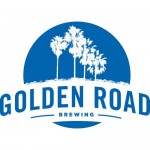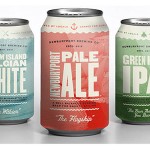Though Devils Backbone now has its sights set on becoming a “significant” regional player, it was a similarly local focus that helped bring the company to its current state. Humphreys said the company has made it a point to “penetrate deeply where we do sell beer,” which up to now is just its home state of Va., Md., and D.C., but that it will “take that philosophy into new markets.”
The goal, as Humphreys said, is to be a top 10 craft brand in every state in its distribution footprint.

With that added capacity, Karbach is looking to meet demand at home before it ventures out of the Lone Star State.
“Right now, the focus is Texas,” said David Graham, marketing and promotions manager with the brewery. “If anything, we’ll be going full tilt into Austin with packaged [products].”
“We want Texas always to be our main market,” he added.
Karbach made 6,100 barrels in 2011, its first year of production. In 2013, it rolled out nearly 19,000.
Nonetheless, planning for this kind of growth hasn’t come without a price. Growing quickly requires significant capital outlay and all of the abovementioned breweries were well-funded from day one.
“This brewery wasn’t bootstrapped and we did plan for the future,” said Gill. “When you’re taking on this amount of capital and this amount of risk, you have to plan for the future. You don’t have a choice.”
But continued growth means continued investment.
“Certainly a drawback is the constant need for new capital,” said Humphreys. “We’ve reinvested everything that’s come in but we haven’t had years where we’ve just sat and taken profit and put in the bank account for the next expansion.”

“The can’s the right package,” said Gill, of Golden Road. “Retailers understand they need to get behind the can.”
She described the increased prominence of cans as a “tidal wave that was coming,” adding those who got on to ride it at the right time now enjoy the proverbial surf.
Added Fisher, of Newburyport, “There’s been a shift in appreciation for craft in a can and I think we were at the forefront of that, too.”
There are other examples: Maine’s Baxter Brewing Co., which produced more than 5,000 barrels in its first year and announced a $2.5 million expansion of its own in 2012, has built its name on the cylindrical backs of 12-oz. cans as well.
But above all, as almost every brewery owner will tell you, delivering the highest quality beer is what will ensure long-term success.
“It started with quality beer,” added Gill.
